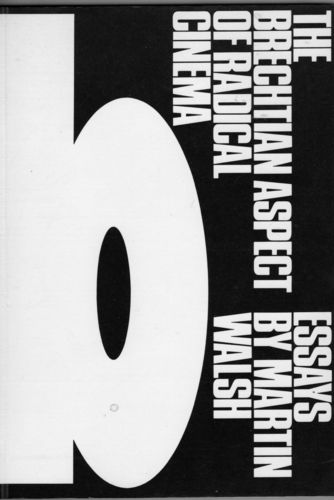Kaja Silverman, Harun Farocki: Speaking about Godard (1998)
Filed under book | Tags: · cinema, film, film criticism, film theory

“Combining the insights of a feminist film theorist with those of an avant-garde filmmaker, these eight dialogues-each representing a different period of Godard’s film production, beginning with My Life to Live (1962) and ending with New Wave (1990), get at the very heart of his formal and theoretical innovations, teasing out, with probity and grace, the ways in which image and text inform one another throughout Godard’s oeuvre. Indeed, the dialogic format here serves as the perfect means of capturing the rhythm of Godard’s ongoing conversation with his own medium, in addition to shedding light on how a critic and a director of films respectively interpret his work.”
With a Foreword by Constance Penley
Publisher New York University Press, 1998
ISBN 0814780660, 9780814780664
260 pages
PDF (added on 2025-1-15)
EPUB (added on 2019-12-16)
See also Farocki’s filmography and bibliography on Monoskop.
Comments (2)Lotte H. Eisner: The Haunted Screen: Expressionism in German Cinema and the Influence of Max Reinhardt (1952/1969)
Filed under book | Tags: · 1910s, 1920s, cinema, expressionism, film, film criticism, film history, germany, romanticism, theatre

The expressionist era of German cinema began at the end of the First World War and ended shortly after the coming of sound. From The Cabinet of Dr. Caligari onwards the principal films of this period were characterized by two influences: literary Expressionism, and the innovations of the theatre directors of this period, in particular Max Reinhardt. This book demonstrates the connection between German Romanticism and the cinema through Expressionist writings. It discusses the influence of the theatre: the handling of crowds; the use of different levels, and of selective lighting on a predominately dark stage; the reliance on formalized gesture; the innovation of the intimate theatre. Against this background the principal films of the period are examined in detail. The author explains the key critical concepts of the time, and surveys not only the work of the great directors, such as Fritz Lang and F. W. Murnau, but also the contribution of their writers, cameramen, and designers.
First published as L’Écran démoniaque. Influence de Max Reinhardt et de l’Expressionisme, 1952; revised 1965.
Translated by Roger Greaves
Publisher Thames and Hudson, London, 1969
360 pages
via knappen
Review (Richard B. Byrne, Cinema Journal, 1970)
PDF (116 MB)
Comment (0)Martin Walsh: The Brechtian Aspect of Radical Cinema (1981)
Filed under book | Tags: · cinema, film, film criticism, film theory

Martin Walsh had been a regular contributor to film magazines in Britain, Canada and the United States and had established himself as a leading proponent of a radical aesthetics of cinema associated with the work of Bertolt Brecht. Keith M. Griffiths, a film-maker and lifelong friend of Walsh, has gathered together for this volume a selection of his published writings, together with some previously unpublished, united around the theme of the Brechtian aspect of radical cinema. Whether discussing Brecht himself, or the Russian film-maker Alexander Medvedkin, or the work of Daniele Huillet and Jean-Marie Straub, these essays are distinguished by their commitment to the clear expression of ideas and problems of great relevance to cinema. (from the back cover)
Edited by Keith M. Griffiths.
Publisher British Film Institute, London, 1981
ISBN 0851701124
136 pages
via cobrarubia1
PDF (6 MB, no OCR)
Comment (0)
